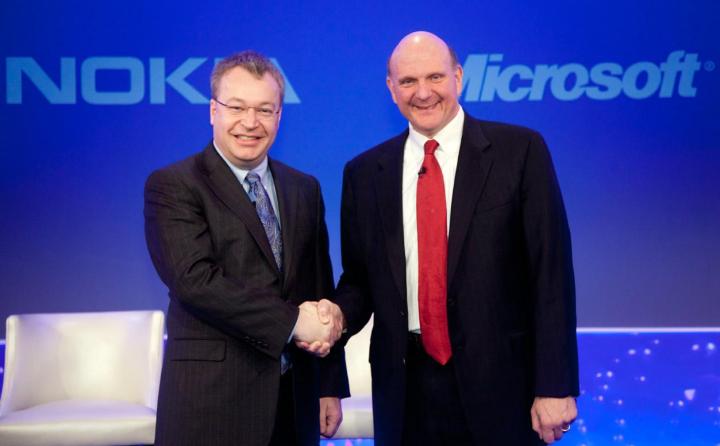
Announced on the Microsoft News Center as well as a joint letter from Microsoft CEO Steve Ballmer and Nokia CEO Stephen Elop on the Official Microsoft Blog, the software company is acquiring Nokia’s Devices & Services business and the right to license Nokia’s patents to other entities. Assuming the deal is approved by Nokia’s shareholders and regulatory agencies, Microsoft will spend approximately $7.2 billion on the acquisition. Specifically, Microsoft will spend 3.79 billion Euros on the mobile devices unit and 1.65 billion Euros on Nokia’s patent portfolio. However, Nokia will continue to create cellular networking equipment, build maps and location-based services, and create other technology outside of the mobile devices unit.
Ballmer and Elop together state: “With the commitment and resources of Microsoft to take Nokia’s devices and services forward, we can now realize the full potential of the Windows ecosystem, providing the most compelling experiences for people at home, at work, and everywhere in between …We will continue to build the mobile phones you’ve come to love, while investing in the future – new phones and services that combine the best of Microsoft and the best of Nokia.”

In a separate email to Microsoft employees, Ballmer says that “This is a smart acquisition for Microsoft, and a good deal for both companies. We are receiving incredible talent, technology and IP. We’ve all seen the amazing work that Nokia and Microsoft have done together.”
Ballmer went on to mention that Stephen Elop, the current CEO of Nokia, will be returning to Microsoft to manage the entire devices team. Many analysts believe that Elop is on the short list to become the next CEO of Microsoft after Ballmer steps down from the position in the next twelve months.
Microsoft hopes to use Nokia’s resources and technology to carve itself a much larger share of the smartphone market, which is currently led by Google’s Android operating system, and Apple’s iPhone. As detailed by Forbes, Microsoft has seen significant Windows Phone growth in European markets, but continues to lag far behind Android and iOS in the United States. Specifically, Microsoft’s market share in the United States is just 3.5 percent.
Regarding exclusivity of the Windows Phone platform on Nokia branded devices, Microsoft will continue to license usage rights of the the Window Phone platform to other companies, according to a blog post created by Microsoft VP Terry Myerson.
Editors' Recommendations
- Nothing Phone 2 vs. Google Pixel 7: which $599 phone is best?
- Microsoft patent imagines a seemingly perfect foldable phone
- Nokia’s new, cheap X100 gives T-Mobile customers 5G for just $252
- Surface Duo 2 vs. Surface Duo: Which is better?
- Realme’s bright green GT Neo2 will go perfectly with your muscle car


